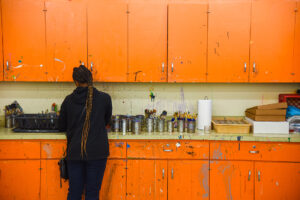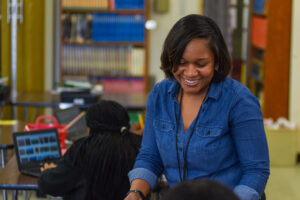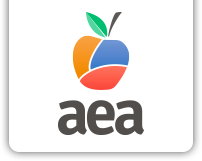Pine Bluff Educator Brings Love of Art Back to Hometown High School
SHALISHA THOMAS’S HIGH SCHOOL ART TEACHER PLANTED THE SEED THAT’S NOW BLOSSOMED IN HER PINE BLUFF CLASSROOM.
“I was very shy and reserved, but there was something about the way that she taught that made art come alive for me,” Thomas said. “I’ve always wanted to be a teacher for some reason. I like helping people. So, art education was the best choice for me.”
Once she had her degree, she knew she wanted to give back to her hometown. She spent five years teaching middle school before accepting a position three years ago at Pine Bluff High School, the same school where her love of art was nurtured.
“There’s some type of beauty that goes along with art,” she said. “I could stand in a museum for hours and just lose time just looking at different pieces. So it’s just a connection that I have with the art, that just makes me feel like I’m home.”
She can’t think of a better place to impart that feeling to others than the place she grew up. Thomas says “growing your own” is a smart way to attract educators to rural or higher poverty areas. When you’re from a place, you want to see things improve and to be a part of that growth.
 “I want the students here to thrive,” she said. “I want them to do well, and of course I just have a love for children anyway, but it’s deeper because I’m from here.”
“I want the students here to thrive,” she said. “I want them to do well, and of course I just have a love for children anyway, but it’s deeper because I’m from here.”
The school district does face challenges. In 2018 the district was placed in state takeover for Academic Distress. The percentage of students living in poverty at the district’s elementary schools ranges from 85-94%, and 78% at the high school where Thomas works.
This means Pine Bluff’s educators must first address the trauma associated with poverty before many of their students can begin to effectively learn.
“I teach students with different types of interests, different abilities and all types of things,” Thomas said. “I try my best to create an environment where the student can feel successful. Some students come to me and they say on the first day, ‘Ms. Thomas, I can’t draw. I can’t do this.’ Their narrative is, ‘I can’t. I can’t. I can’t.’ Before they leave me, I want them to have a feeling of, ‘I can do this.’”
As her students apply paint or colored pencils to paper, Thomas walks the room. She hops from desk to desk to answer questions and offer guidance.
“My job is to instill some confidence in them, to work on that so they can continue to build on it,” she said. “I try to make sure that I’m very mobile so that I can meet the need... I want to make sure that I’m invested in what they’re doing.’”
Part of that guidance is helping students understand that art is about being expressive, not necessarily producing a photorealistic copy of a subject.
“You don’t have to always be perfect,” she said. “[Art] could deal with what you’re experiencing at that moment. It could be expressing your beliefs.”
She understands many of her students will not go into an art field after graduation but says everyone benefits from an appreciation for it.
“It’s important to understand how art impacts every facet of life,” she said. “Even if you are someone who loves to play video games or even fashion design, whatever it is, even painting cars... all of that goes back to art.”
Thomas has at least one student who wants to follow her footsteps to the classroom, while others say the job is too much work.
Thomas admits she doesn’t have much time outside of the classroom, but she finds joy in spending time with her family.



The AEA, with its professional development and networking opportunities, offers that help, and Thomas said, peace of mind.
“I think that it’s important to be a part of an organization where you will be taken care of, where your wellbeing will be taken into consideration,” she said. “As I’m thinking about the different things I go through with students, and different ways that I may need support, it’s good to know that I can be a part of an organization that I can make calls or I can have certain perks for being a member. I think that it’s just a good investment.”



